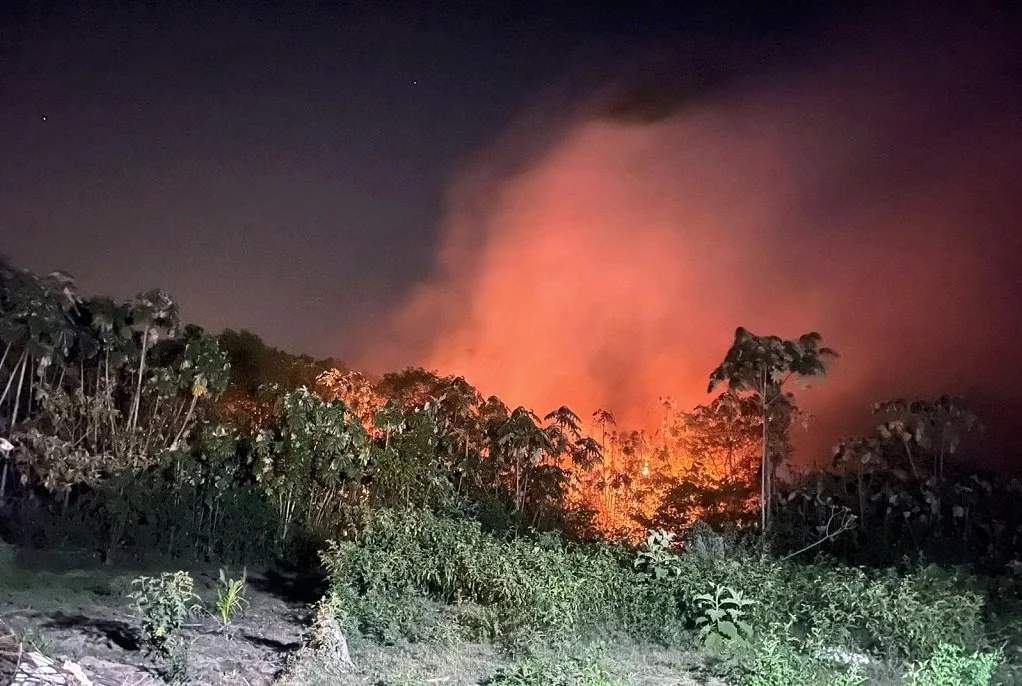Fielding for Oil: The ExxonMobil Guyana Global Super League
By Michael Hardy, GameChanger Sponsorship Pledge
Cool Down is a network of organisations. Blogs uploaded to the site are by no means a reflection of the opinions of every member organisation
The inaugural Global Super League will begin on November 26th and will see 11 games played across 11 days, culminating in the final held on December 7th.
The tournament will involve five cricket teams from around the globe: Guyana Amazon Warriors, Lahore Qalandars, Hampshire Hawks, Rangpur Riders and Victoria. Every game will be played at the Guyana National Cricket Stadium.
Despite being the South American nations’ favourite sport, cricket faces a precarious future in Guyana. The country is particularly vulnerable to the climate crisis, with low-lying coastlines which are 2m below sea level in some areas.Flooding is an immediate and growing threat. In 2022, 3,900 square kilometres of land was affected by flood waters and in 2021, the president declared a disaster in response to flooding which impacted 28,228 households.
While Guyana is frequently devastated by flooding, people now have to contend with wildfires too. In 2024, 5,000 square miles(13,000 square kilometres) of land was burned due to wildfires amounting to 6% of Guyana’s landmass.
Despite the devastation caused to Guyana by the climate crisis - Guyana continues to plough ahead with offshore oil expansion with the fossil fuel giant ExxonMobil. With a new $12.7 billion project being given the greenlight earlier this year, which will add approximately 250,000 barrels of daily capacity by the end of 2027.
Wildfire in Guyana (Photo credit: Guyana Fire Service)
Scaling up oil extraction will have devastating consequences across the globe and threatens the very future of cricket. Of all the major pitch sports, cricket will be the hardest hit by climate change. With games being postponed and cancelled due to unplayable conditions and player safety. Australian captain Pat Cummins has spoken out about his experience playing in extreme heat and humidity. Whilst Worcestershire's cricket ground was entirely submerged after flooding earlier this year, a Big Bash League match was called off due to bush fires, a T20 World Cup warm up between USA and Bangladesh was abandoned due to extreme weather and the winners of the T20 World Cup, India, were left stranded in Barbados due to Hurricane Beryl.
But ExxonMobil uses cricket to sportswash its image and help maintain its social licence.
The Global Super League has announced that ExxonMobil Guyana will be the title sponsor of the inaugural tournament. It is also the shirt sponsor of the Guyana-based cricket team, Amazon Warriors, who are set to compete in the tournament. ExxonMobil will get significant coverage throughout, but will also be afforded the opportunity to launder their reputation and sportswash its image using cricket around the tournament too;as seen in this ExxonMobil promotional video.
But why cricket? Throughout the promotional material, cricket is described as a “unifying force” and the “heartbeat of the Guyanese Identity” meaning ExxonMobil can maximise their exposure in Guyana, using the nations most popular sport, where they are also planning to expand fossil fuel production. Sponsoring cricket is a tool utilised by ExxonMobil to build the social licence that is key to enabling its highly profitable extraction projects.
Research shows that fans and spectators begin to associate the intense emotion of sport with the brands that sponsor the teams and tournaments. Over time this results in fans building positive associations with specific brands, often overlooking their more questionable and damaging practices.
This brand new tournament has an opportunity to ensure sustainability is rooted at its heart. Instead, we are seeing the same mistakes repeated from elsewhere in cricket, whether this be Saudi Aramco’s deal with the ICC or the plethora of fossil fuel sponsors on display at this summer’s T20 world cup. Brand new tournament - same old deals.
Cricket has a responsibility to lead by example, protect its fans, and safeguard its future and the future of its followers. Teams, tournaments and governing bodies must step-up, take serious climate action and drop their climate-wrecking sponsors.



